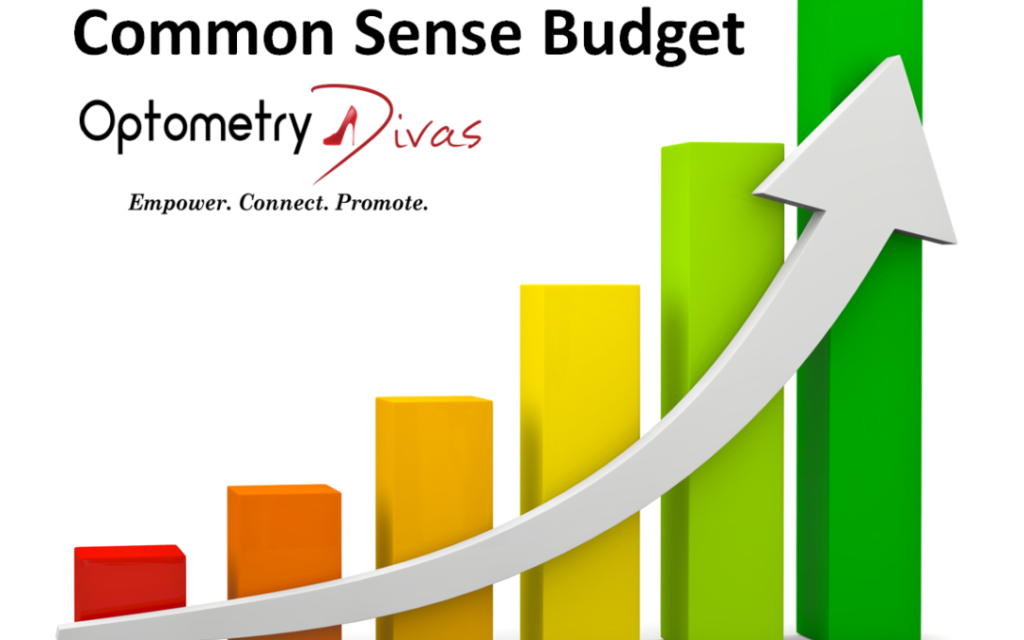The Common Sense Budget for COVID-19

There’s no doubt that small businesses will be the hardest hit from the current COVID-19 pandemic. So, how can small businesses like our practices survive these turbulent times? There’s no easy answer; however, having a budget especially for the next 3 months will help you ride the storm.
What is a budget?
A budget is a financial document used to estimate and plan future income and expenses. Following the principles of a personal financial budget, you can create a budget for your practice. A budget may be prepared simply by using paper and pencil, or on a computer using a spreadsheet program like Excel, or with a financial application like Mint.com, Quicken or QuickBooks.
Your budget can give you information about how much you can spend each month and how much you can take out of your practice as a salary or draw to live on. If you set up your budget to require a profit, you will start with all the expenses you need to pay each month, leaving the required profit as the income number needed to make the budget balance.
For example, if your goal is to net $15,000 profit per month. Add up all your expenses and your income for the month, and then subtract expenses from income. If the difference is $15,000 then you have your required profit and the budget is balanced.
If the difference is less than $15,000, you will need to either decrease your expenses or increase your income until your reach that amount to make the budget balance. If you need help with creating a required profit budget, click HERE to contact me.
Why Your Practice Needs a Budget
The bottom line on why to create a budget for your practice is that it will help you figure out how much money you have, how much you need to spend, and how much you need to bring in to meet practice goals.
But there are other reasons, too. Bankers and investors may want to see a budget when you ask for a loan or other forms of funding. Employees should also be made aware of the budget so that they understand where the practice is going and become motivated to work harder.
If you’re missing the targets set out in your budget, you can use the budget to troubleshoot by figuring out how you can reduce expenses like payroll or general office expenses, increase sales by more aggressive marketing, or lowering your profit expectations.
How Do I Create a “Common Sense” Budget?
The process for preparing a monthly budget for your practice includes the following steps:
- List all sources of monthly income, including Patient out of pocket and 3rd party payments. Since your practice doesn’t get paid immediately from a 3rd party, you may create an account receivable (AR) category for your expected 3rd party payer income. Your practice management software should have reports to help you with your AR.
- List all required, fixed expenses, like rent/mortgage, and utilities. These are payments you must make every month, even if you have less income than expected. If your fixed expenses are too close to your expected income, you may have trouble making your payments. See if you can cut down on your fixed expenses or turn them into variable expenses.
- List other possible and variable expenses such as payroll and cost of goods. Payroll can be a variable expense if employees are paid by the hour. The # of hours worked may fluctuate month to month, therefore fluctuating your labor costs. Cost of goods is another example of a variable expense. This expense is usually tied directly to sales. For example, if you have fewer patients in one month, your lab bills may be lower.
- Next, include expenses to capture new patients in this budget, like advertising expenses. If you want to grow and/or maintain your practice, you must advertise. The amount allocated for advertisement may differ for new practices vs. established practices. Nevertheless, there must be an amount allocated.
- Finally, It also helps if you find out what the budget norms are for your practice modality in order to compare your practice performance with the norms. Don’t forget to review your budget at the end of every month to see if you’re on target and to project for the next month.
Here ‘s an example:
| Expected Gross Income | $ 50,000.00 |
| Cost Of Goods Sold | $ 15,000.00 |
| Expenses | |
| General Office Overhead (Variable Expenses) | $ 5,000.00 |
| Marketing (Advertising Expenses) | $ 2,000.00 |
| Occupancy Cost (Fixed Expenses) | $ 5,000.00 |
| Payroll Expense (Variable Expenses) | $ 15,000.00 |
| Other Expenses | $ 1,500.00 |
| Total Expenses | $ 28,500.00 |
| Practice Net Income | $ 6,500.00 |
| Practice Debt Monthly Payments | $ 2,500.00 |
| Net Cashflow | $ 4,000.00 |
In these uncertain times, remember to take care of yourself and keep calm.
This can be difficult especially when cash is running out, but remember to take care of yourself in a way that works for you- for instance, eat well, and try to get some exercise in. Taking care of yourself will help you to keep calm, which in turn will also mean keeping your staff calm, and ultimately, a healthier mindset for everyone to come up with innovative ideas to move forward.
Do you have a common sense budget that you’re using right now?
What resources helped you? Please share in the comment section below.






Responses